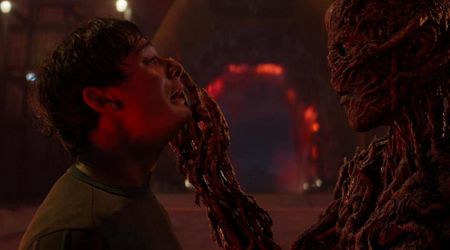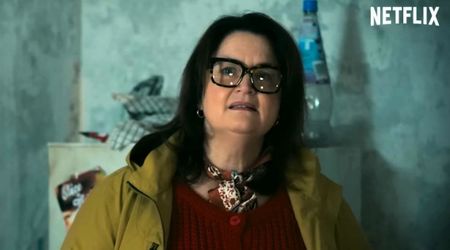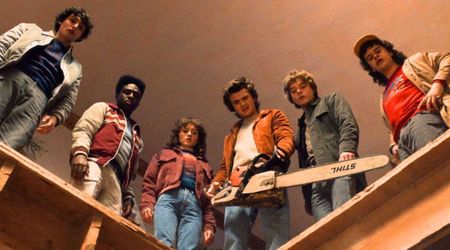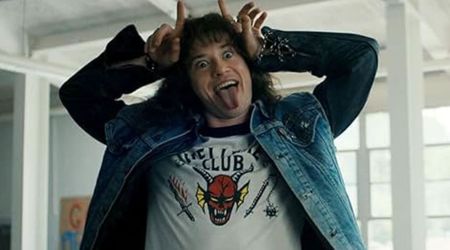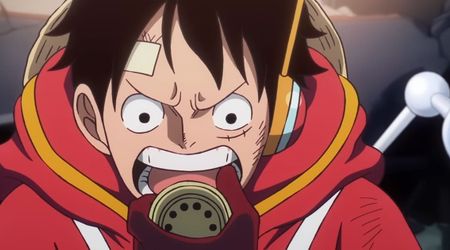'Narcos: Mexico': How similar is the real-life torture and murder of DEA agent Enrique 'Kiki' Camarena to the story

In its spin-off, 'Narcos: Mexico' goes on to show the Guadalajara cartel's ascent as Miguel Ángel Félix Gallardo (Diego Luna), Rafael Caro Quintero (Tenoch Huerta Mejia), and Don Neto, aka Ernesto Fonseca Carrillo (Joaquín Cosio), join hands. Set in the 1980s, the plot revolves around how an undercover agent for the Drug Enforcement Administration (DEA), Enrique S "Kiki" Camarena Salazar comes into the picture and tries to catch the drug traffickers red-handed. However, towards the end of season one, the gang kidnaps, tortures, and mercilessly murders Kiki.
In a shocking twist in season one finale, Felix is free and back under police protection. He makes a swashbuckling entry and reclaims his cartel! On the other hand, Kiki's death starts a new revolution in the DEA: a homicide investigation called Operation Leyenda (which translates to Operation Legend). But who was Kiki Camarena and how did he enter the Guadalajara drug scene? How true are the events that unfolded over ten episodes in the first season? Here's a quick comparison between the reel and the real pictures.

Born in 1947, Camarena moved from Mexico to the United States of America but continued to visit his grandmother in Guadalajara. He attended high school in Calexico (a portmanteau of California and Mexico) where he met high school sweetheart and future wife, Geneva 'Mika' Camarena. After graduation, Kiki Camarena served in the United States Marine Corps for three years, attaining the rank of Lance Corporal. After his military service, he moved back to his hometown of Calexico, California to work as a fireman and then became a police officer in the Calexico Police Department. He also worked as a Special Agent on the original Imperial County Narcotic Task Force (ICNTF).
It was in 1975 that he first joined the DEA and in 1981, he was assigned the Guadalajara office. In the show, he learns he didn't get the transfer to Miami and takes Guadalajara as it was the only other option. Kiki moved with his wife and young son from California to Mexico. In his four-year stint, he gathered much information on the drug cartels and chased several traffickers.

It was in 1984 that Camarena got a tip for a 2,500-acre marijuana plantation called Rancho Búfalo, which was destroyed by 450 Mexican soldiers backed by helicopters. Reportedly, the farm had an estimated annual production worth $8 billion. Ticking off Felix, Don Neto and Rafa's plans, Kiki continued with his operation until he became the target owing to corrupt Mexican officials who sent his location to Felix and his gang. Merely days before he was set to be transferred to San Diego, Kiki Camarena was kidnapped while on his way to lunch with his wife. Taken at Gallardo ranch, he was tortured for 30 hours before being brutally murdered. His body was found dumped on the outskirts of La Angostura. Wrapped in plastic, his ribs were broken, skull crushed and a hole drilled into his head. Traces of drugs were also found in his body.
In 1988, Camarena was featured on the cover of TIME magazine and posthumously received the DEA's Award of Honor, the highest award in the agency. Moreover, the Enrique S. Camarena Foundation is committed to the prevention of drug use, trafficking, and violence. Several movies, short films and television series have documented the story of Kiki Camarena, right from 'Drug Wars: The Camarena Story' (1990), 'Heroes Under Fire: Righteous Vendetta' (2005), 'Miss Bala' (2011), and the original Netflix drama 'Narcos'.


